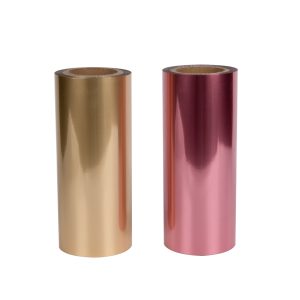Technical and Detailed Guide to Cold Foil Printing
1 min read
Mastering Cold Foil Printing: A Technical Guide for Industry Professionals
Cold foil printing is a cutting-edge technique that has transformed how metallic effects are applied in the printing industry. This in-depth guide explores the technical details of cold foil printing, offering a comprehensive resource for professionals looking to enhance their printing capabilities. From the process breakdown to equipment specifications, this article provides everything you need to master cold foil printing.
What is Cold Foil Printing? #
Cold foil printing, also known as cold foiling, is a modern method that applies a thin metallic foil layer to substrates like paper, cardboard, or plastic using a UV-curable adhesive. Unlike traditional hot foil stamping, which relies on heat and pressure, cold foil printing operates at room temperature. This makes it faster, more cost-effective, and adaptable to various printing systems, including digital presses.
The Cold Foil Printing Process: Step-by-Step #
To achieve high-quality results, understanding the technical process is key. Here’s how cold foil printing works:
- Adhesive Application: A UV-curable adhesive is precisely printed onto the substrate where the foil effect is desired. This can be done using flexographic, offset, or digital printing units.
- Foil Transfer: Metallic foil is pressed onto the substrate, sticking only to the adhesive-coated areas.
- Curing: UV light cures the adhesive instantly, bonding the foil securely to the substrate.
- Excess Foil Removal: Unattached foil is removed, leaving a clean, metallic finish.

Technical Comparison: Cold Foil Printing vs. Hot Foil Stamping #
Cold foil printing and hot foil stamping both create metallic effects, but their technical differences are significant. Here’s a comparison:
| Feature | Cold Foil Printing | Hot Foil Stamping |
|---|---|---|
| Heat Requirement | None (room temperature) | Requires heated dies |
| Speed | Faster (inline process) | Slower (offline process) |
| Cost | Lower cost per unit | Higher due to dies and setup |
| Design Flexibility | High (digital-compatible) | Moderate (die-dependent) |
| Substrate Compatibility | Wide range (paper, plastic, etc.) | Mostly paper and cardboard |
| Energy Consumption | Low (UV curing) | High (heat-based) |
This table underscores why cold foil printing is often favored for its efficiency and versatility in professional settings.
Equipment and Materials #
To execute cold foil printing effectively, you’ll need:
- Printing Press: A press with UV curing capabilities (e.g., flexographic, offset, or digital).
- Foil: High-quality metallic foil in colors like gold, silver, or holographic finishes.
- Adhesive: UV-curable adhesive designed for foil adhesion, matched to the substrate.
- Substrate: Compatible materials include paper, cardboard, and select plastics.
Industry Examples #
- Luxury Packaging: A company reduced costs by 15% using cold foil printing for metallic accents on cosmetic boxes, leveraging the inline process.
- Beverage Labels: A wine label producer used cold foiling with digital printing for small-batch customization, enhancing design flexibility.
Conclusion #
Cold foil printing is a technically advanced method for adding metallic effects to printed materials. Its speed, cost-efficiency, and adaptability make it a vital tool for printing professionals. By mastering this technique, you can elevate your offerings and stay competitive in the industry.





